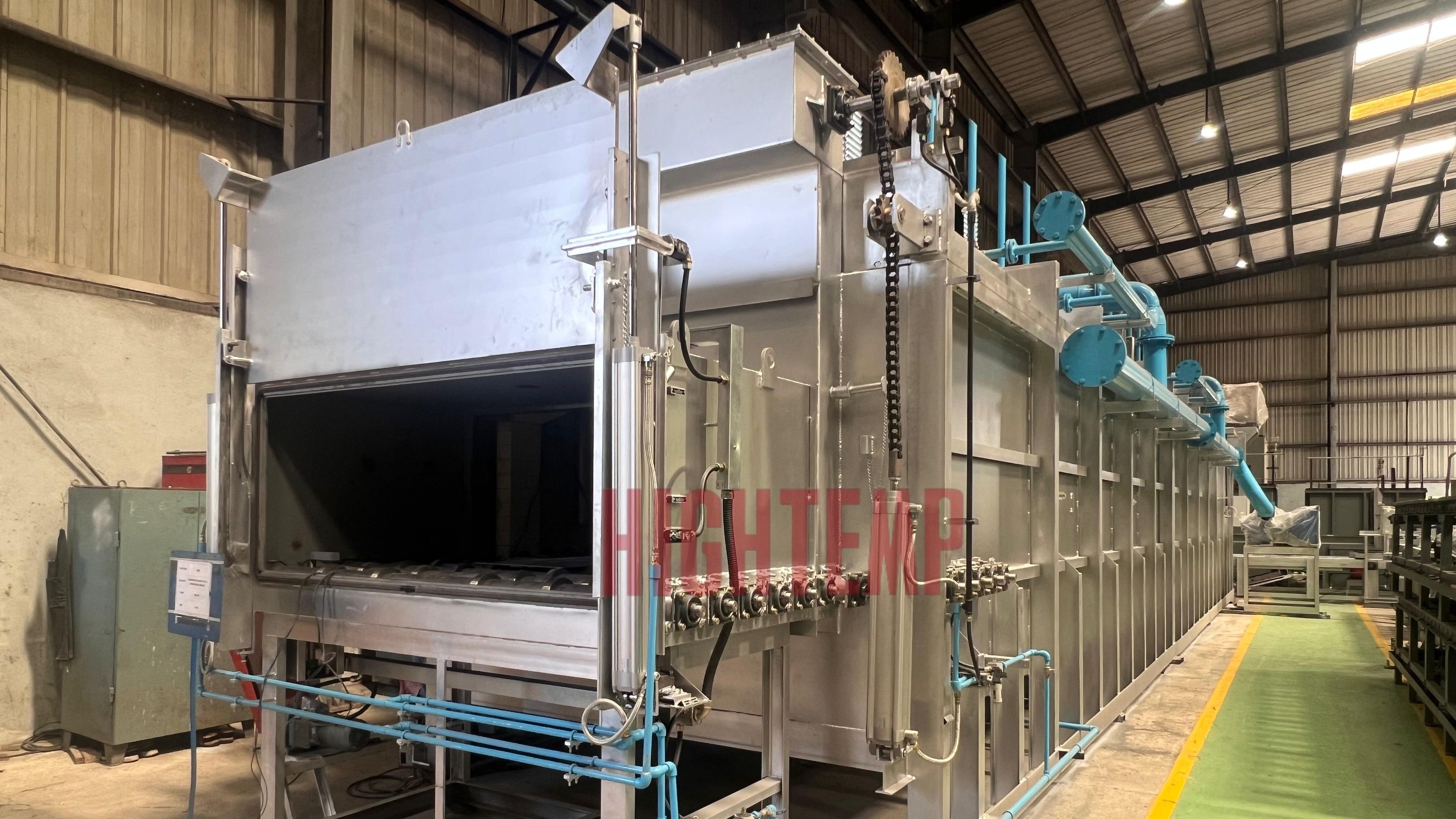The automotive industry depends on components like gears, shafts, bearings, crankshafts, and connecting rods—parts that must be both strong and reliable. To achieve the required hardness, ductility, and wear resistance, heat treatment is essential.
Among the many processes, three stand out for automotive applications:
• Spheroidize Annealing (to improve machinability)
• Carburising (to harden surfaces while keeping cores tough)
• Decarb Annealing (to soften surfaces and enhance ductility/magnetic properties)
Meeting these demands at large production volumes requires advanced furnace technology. This is where Continuous Pusher Furnaces provide unmatched advantages.
Why Pusher Furnaces?
Unlike batch furnaces, which process one load at a time, a pusher furnace works continuously. Trays or baskets are steadily pushed through heating zones, ensuring a smooth flow of materials. This design brings several key benefits:
• Consistent results – uniform heating and atmosphere conditions across every component.
• High productivity – continuous operation supports mass production.
1. Spheroidize Annealing in Pusher Furnaces
Process: Carbon steels, such as those used in bearings, shafts, and gears, benefit greatly from spheroidize annealing. In this process, steel is heated to just below its critical temperature and held for extended periods. This treatment allows the hard carbide particles within the steel to transform into smooth, rounded shapes, improving machinability and enhancing subsequent hardening response.
Benefits of Pusher Furnace:
A pusher furnace is especially well-suited for this process. Its continuous design ensures uniform heating and long soaking times, making it ideal for handling high volumes of steel components with consistent quality. Consistent carbide structure across all parts due to precise temperature control.
• High throughput, enabling continuous supply of spheroidized components for machining lines.
• Energy savings, The furnace saves energy because it stays hot all the time, instead of heating up again and again.
Result: Steel becomes soft and machinable, reducing tool wear and improving production efficiency in machining operations.
2. Carburising in Pusher Furnaces
Process: Components like gears and camshafts are heated in a carbon-rich atmosphere. Carbon diffuses into the steel surface, creating a hard case while keeping the core ductile.
Benefits of Pusher Furnace:
• Precise case depth control with minimal variation (0.06–0.08 mm).
• Superior carburising quality thanks to controlled gas flow and continuous atmosphere monitoring.
• Uniform hardness across large batches, ensuring reliability in critical auto parts.
Result: Automotive parts with wear-resistant surfaces and tough cores, ideal for heavy load and fatigue resistance.
3. Decarb Annealing in Pusher Furnaces
Process: Components (such as motor lamination steels or specialty auto parts) are exposed to an atmosphere that removes carbon from the steel surface.
Benefits of Pusher Furnace:
• Controlled atmosphere ensures precise decarburization without over-processing.
• Continuous flow maintains uniform surface properties across all parts.
• Energy-efficient cooling systems reduce cycle time while keeping process stability.
Result: Components with improved ductility and enhanced magnetic properties, making them suitable for both structural and electrical applications.
For today’s automotive industry, the demand is clear: faster production, consistent quality, and reduced energy costs.
HIGHTEMP’s Continuous Pusher Furnaces are designed to deliver exactly that—making them the preferred choice for processes like Spheroidize Annealing, Carburising, and Decarb Annealing With their ability to handle large volumes while maintaining accuracy, these furnaces help manufacturers achieve reliable, high-performance parts at scale.




